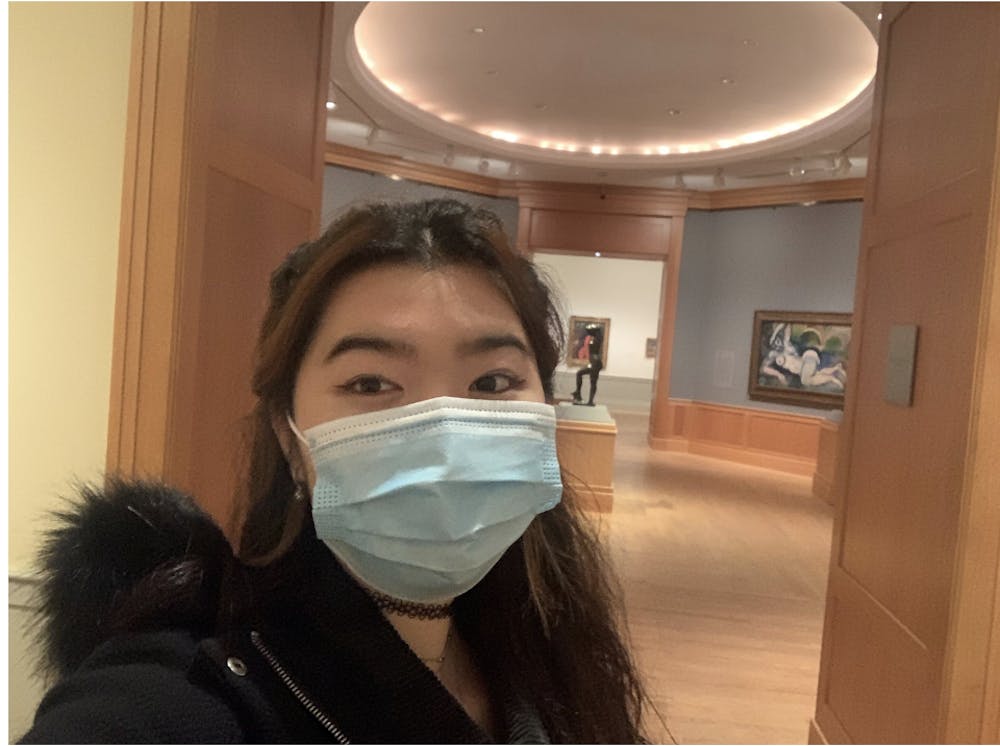The Baltimore Museum of Art (BMA) has finally reopened. After long months of inactivity and being shut down due to COVID-19, a phased opening began on Sept. 16, which allowed for nearly every exhibit to be fully reopened by the end of that month. That’s right, the BMA is officially back.
The BMA has long been one of the few treasured local outlets of entertainment for Hopkins students, displaying a vast collection of breathtaking art and providing a mini-escape from work. The official reopening was exciting enough of news for me that I knew I had to go see it for myself. My trip was nothing short of satisfactory; if anything, it was actually extremely refreshing.
Because the museum has to follow public health guidelines, not every exhibit is open to the public. Although this was slightly disheartening upon walking into the building, my disappointment was short-lived, for there were many more open exhibits than not.
And more importantly, I felt completely safe the entire time I was inside the building. Nobody was able to come within even 10 feet of me (except an employee whenever I asked questions, who still kept a good amount of space between us during these exchanges), and this allowed me to not only be able to enjoy a quiet and peaceful stroll through the exhibitions, but also to not have to fret or worry about potentially catching or spreading the virus.
Within each exhibition, employees were promptly stationed about in order to enforce social distancing protocols. Floor and wall graphics were also scattered throughout the building, which made it even easier to control the flow of visitors.
There were quite a lot of open exhibitions, many of them showcasing modern or contemporary art. However some that I found particularly enriching or eye-catching included Shinique Smith's Grace Stands Beside, Valerie Maynard’s Lost and Found and SHAN Wallace’s 410. What all of these had in common was the fact that the materials used in the artwork and the artists of these specific pieces were all long-affiliated with the city of Baltimore.
Because their artwork is all similarly Baltimore-based and was presented during a time in which the Black Lives Matter movement was the most prevalent, I personally felt that the art spoke even louder to me. This, in a way, helped me become more educated about the city in which I currently live.
Although the BMA has much to offer in European, East Asian and contemporary art, it is also home to one of the “most important collections of African art on the East Coast” and includes 2,100 pieces from ancient Egypt to modern Zimbabwe. Highlights from this exhibition include, but are not limited to, Commemorative Head of a King, Sande Society Helmet Mask and Asymmetrical Betu I.
The BMA’s vast collection of African art alone is a solid representation of African-American culture and Baltimore’s social history. I would argue that every Hopkins student in the area should go visit the exhibit as a means of self-education.
A more recent addition that I was fortunate enough to not only just see in-person, but also experience, was the Is It You? exhibition, located in the Contemporary Wing. Katharina Grosse, an internationally acclaimed artist, presented five recent paintings and an expansive, immersive installation of colorful spray-painted cloths hanging from the ceiling. This was meant to create an “enveloping ‘room’ with undulating walls” and to “form a vibrant and immersive experience for the visitors.”
In this exhibition, I was able to feel like a part of the artwork instead of an outside observer; the cloths are formed into a little cave of sorts, allowing visitors to enter it. My personal interpretation of this piece was that it is supposed to encourage visitors to welcome self-discovery and to trust in their creative capabilities. Grosse was successful in this endeavor.
The BMA has undergone a lot of logistical preparation for its reopening and that the managers, and I firmly believe that that the museum did a wonderful job. All visitors must reserve a “timed-entry pass” a few days or more prior to the planned visitation and can only enter and exit the building through one way. The directional stickers and arrows on the floor all throughout the museum also provided clear guidelines for visitors to adhere to and reinforced the maximum occupancy numbers per gallery.
All of these factors together made this trip worthwhile and definitely gave me some room to breathe, both literally and figuratively.
I strongly recommend that you and your friends reserve a time-slot to go visit the BMA together in order to support local art platforms and regain whatever amount of sanity has been lost due to the pandemic. And, dare I forget to mention, there are also virtual galleries on the BMA website that you can access if you would prefer not to visit public spaces.





